8+ Sample Bistro Business Plan
-
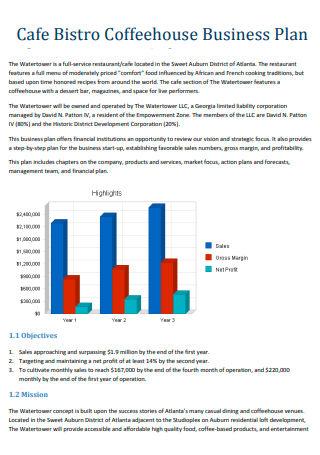
Cafe Bistro Coffee House Business Plan
download now -
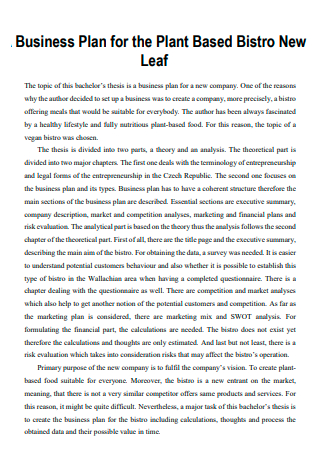
Bistro New Leaf Business Plan
download now -

Blogging Bistro Business Plan
download now -
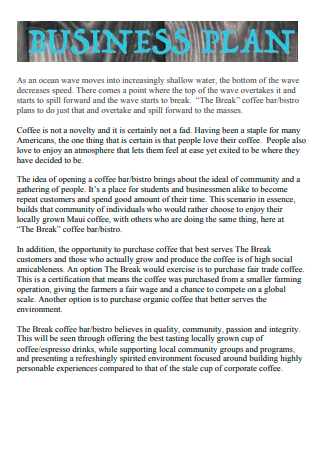
Bistro Business Plan Example
download now -
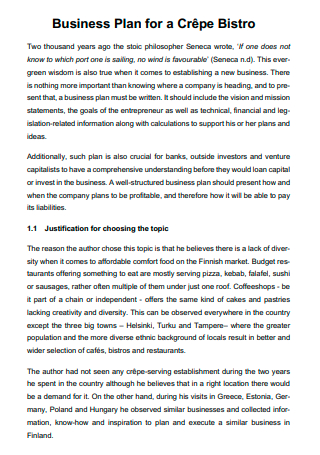
Printable Bistro Business Plan
download now -
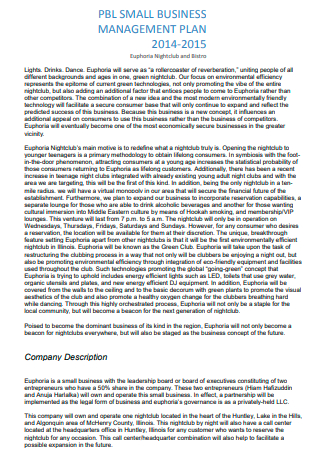
Bistro Small Business Management Plan
download now -

Bistro Business Plan Template
download now -
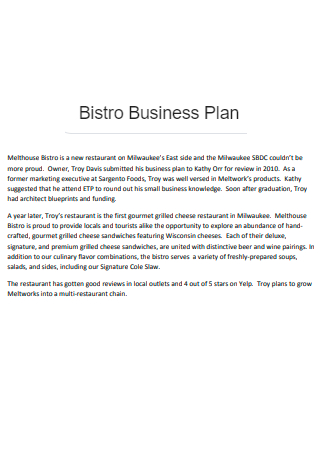
Basic Bistro Business Plan
download now -
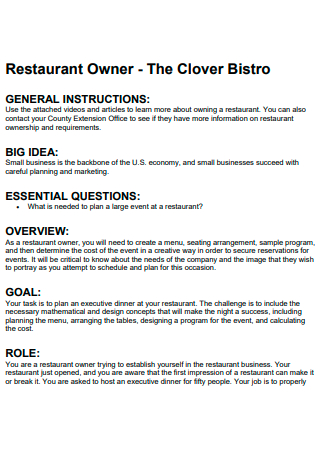
Bistro Business Plan in PDF
download now
FREE Bistro Business Plan s to Download
8+ Sample Bistro Business Plan
What Is a Bistro Business Plan?
Marketing Strategies for a Bistro Business
Benefits of Owning a Bistro Restaurant
Tips On How To Make a Bistro Business Plan
FAQS
What Is the Difference Between a Bistro and a Restaurant?
Is a Bistro and a Café the Same?
What Are the Drink Options for a Bistro?
What Is a Bistro Business Plan?
A business plan for a bistro is a document that defines the overall future and aims of the company. It may include the marketing approach, financial issues such as budget and pricing, and the items and services that a beginning bistro business will offer. As the center of the document, it introduces the executive summary for a bistro business’s future plans and objectives. Restaurant business plans and café business plans are two further examples of related food business plans. Some aspects in your financial planning for your bistro and wine business plan may include rental leasing agreements and expenses related to the construction or remodeling of a property into a bistro, as well as all early beginning costs and how to obtain funding. Your business plan’s product and services section would also cover all of the food and beverages you intend to put on your menu.
There are concerns and policies involving wage and tipping for employees in the restaurant sector that you might potentially address in the business. Even though bistros are often tiny, event planning can be included as a potential future goal. There is a lot of material that must be considered in your cafe bistro business plan, and as you continue reading, you may find some helpful methods in creating your own bistro business plan.
Marketing Strategies for a Bistro Business
The mere existence of a firm does not ensure its success. Furthermore, in the restaurant industry, profit margins are thinner, and revenues may not skyrocket immediately once. As a result, patience and a backup plan are always recommended. One thing you can do to assure notoriety and success for your small bistro business is to use marketing methods that will pique the interest of both locals and visiting tourists. And here are six marketing concepts for you to consider as part of your marketing strategy:
Benefits of Owning a Bistro Restaurant
To be honest, running a restaurant is a risky endeavor. Because it is a small restaurant, it has competition from both sides. That includes formal restaurants as well as cafes and coffee shops. When it comes to the classification of food enterprises, the distinctions have become increasingly muddled over time. Of course, there are still advantages to operating a bistro that you may take advantage of. And the best way to ensure so is to encourage regular kitchen cleaning and to avoid frequent kitchen incident reports. That being said, here are a few advantages:
Tips On How To Make a Bistro Business Plan
Are you thinking of launching a bistro? It will not be simple; no startup is. It takes a lot of things for a business to blow up, and it usually doesn’t happen right away. Obtaining the hearts of the locals is only one method. Another option is to take off with your marketing strategies. A business strategy, on the other hand, addresses not only the marketing aspect but also all of the behind-the-scenes issues. The development of a menu, the financial element, and many other factors. So, here are some pointers to help you create that café bistro business plan you’ve been thinking of!
Tip 1: Introduce the Concept
For the most part, a concept provides branding to a given business. Are you going for a cozy vibe? Is it a lively one? A very private setting? It’s difficult to achieve all of that at once. It doesn’t imply you can’t do them all; you can alternate when there are events as well. However, offering a concept draws the type of market you want to visit your bistro. A concept will also assist you in limiting your menu or branding in the first place. People will regard your bistro as the same as everyone else’s if you don’t have a concept and come across as generic.
Tip 2: Pick a Location
The location of your firm is critical to its success. Location will also aid you in determining your financial projections and target demographic. Some regions are more expensive than others, especially if they are often visited by tourists or have a large population. That being said, location in terms of accessibility is also crucial. Identifying whether it should be placed on the streets where pedestrians pass by or within an establishment will also assist investors in visualizing the future aim you have for your restaurant.
Tip 3: Identify Your Market
Identifying the intended market is constantly emphasized while developing a business plan and marketing plan. After all, it contributes to your bistro’s exclusivity. It is also critical to research which markets are currently dominating or are typically inclined to this type of business. After all, it’s difficult to recoup financially when you’ve failed to establish and attract a market for your bistro. You might have to start from scratch.
Tip 4: Create a Sample Menu
Before releasing your menu to the general public, create a sample for your investors to review. This will also help them grasp the prices you’ve established. A sample menu with all of the creative designs and your logo must be drawn initially in order to determine whether it is visually appealing or would turn off customers. According to that, you can even conduct surveys or hold a sample tasting based on your sample menu to discover which foods receive the most attention. As a result, when the real launch occurs, it is practically certain to be a success.
Tip 5: Financial Projections
Creating a financial projection is vital because it will allow you to estimate how much it will cost you on a daily basis to build and manage a restaurant. It also helps to receive financial calculations based on how big your restaurant is in terms of size and how your intended market will likely respond. Identifying your losses may also assist reduce your chances into becoming in debt.
Tip 6: Training and Service
Offering to train your staff or easing them into their job descriptions through new employee orientation will enable them to provide excellent customer service. In terms of service, creating a detailed service will also help to reduce delays. What order would you serve your food? People will place their orders at the counter or by requesting a waiter. These are key issues to ask while putting your employees through training and determining how they will carry out their duties. Will your personnel need to be oriented and trained specifically for this role, as bistros normally serve French cuisine? That is something you must smooth out in this section.
FAQS
What Is the Difference Between a Bistro and a Restaurant?
A bistro is a small restaurant where people can eat at a lower price. It provides a more relaxed ambience than a restaurant that favors fine dining. Bistros are often tiny and closed, with food that might be modest or high-class.
Is a Bistro and a Café the Same?
Although both establishments are nearly identical in the sense that they are small and prefer casual diners, the key takeaway would be the word “dining.” People frequently go to cafés for drinks such as coffees or teas, as well as for the dessert options. However, some cafés still serve meals; they are simply not as extensive as one would expect from a bistro.
What Are the Drink Options for a Bistro?
Bistros provide a broader selection of drinks. They can serve tea or coffee, such as an espresso or an iced Americano. There are other bistros that offer their own chocolate drink as well as some fruity beverages. Bistros aren’t immune to alcohol either, as wines and cocktails are frequently served with meals. So, if you can think of a cocktail, chances are a bistro will have it.
Bistros appear to be a lot of fun to establish as a business, but keep in mind that business requires a lot of money and decision-making. You could find up in debt if you make one wrong move! And, to lessen the likelihood of this happening, Sample.Net has a sample bistro business plan template for you to use as a guide!
